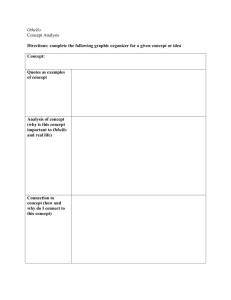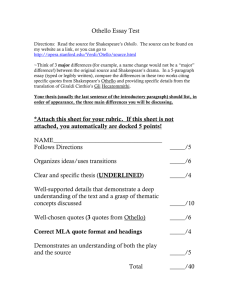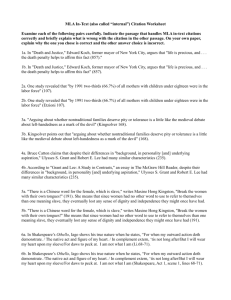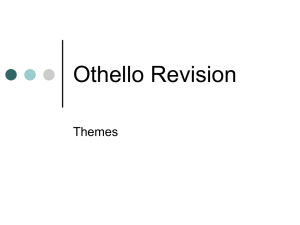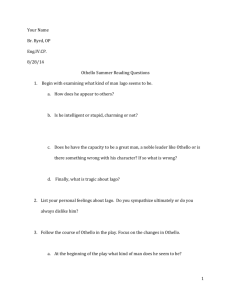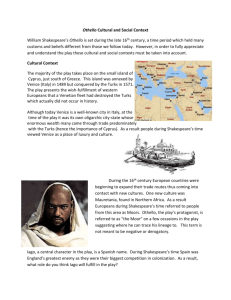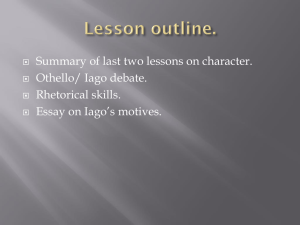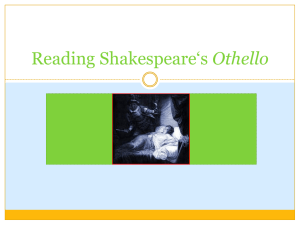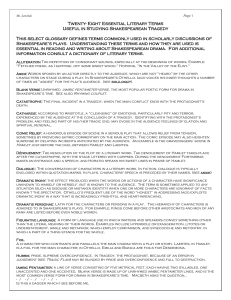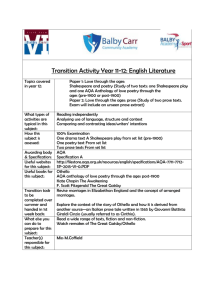Othello William Shakespeare
advertisement
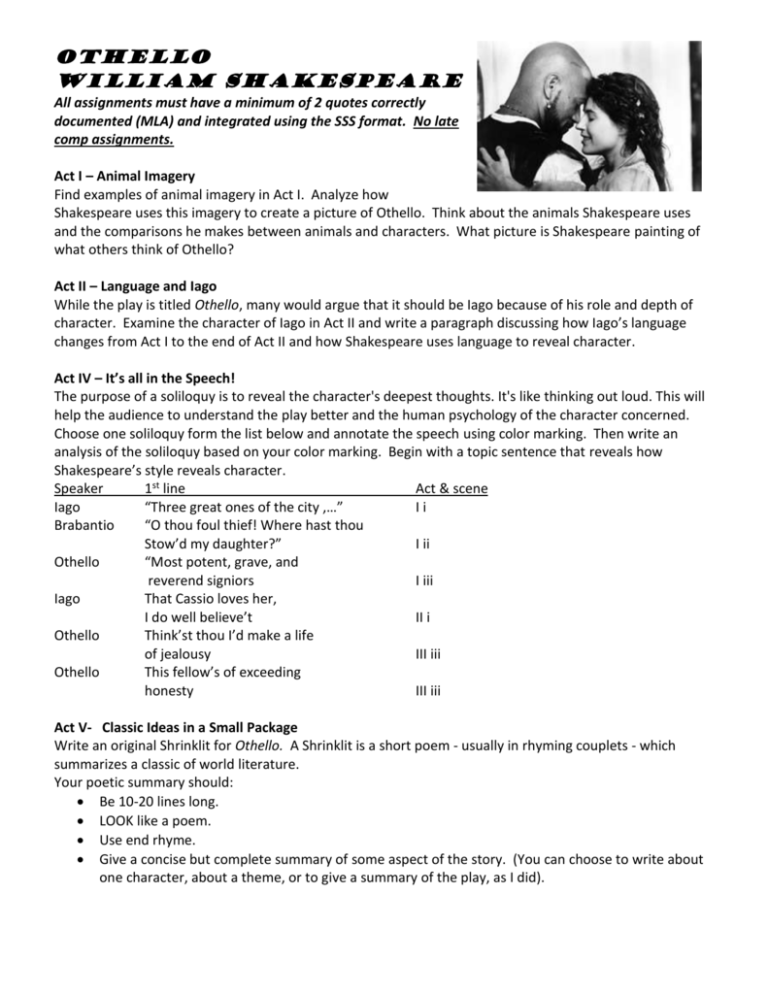
Othello William Shakespeare All assignments must have a minimum of 2 quotes correctly documented (MLA) and integrated using the SSS format. No late comp assignments. Act I – Animal Imagery Find examples of animal imagery in Act I. Analyze how Shakespeare uses this imagery to create a picture of Othello. Think about the animals Shakespeare uses and the comparisons he makes between animals and characters. What picture is Shakespeare painting of what others think of Othello? Act II – Language and Iago While the play is titled Othello, many would argue that it should be Iago because of his role and depth of character. Examine the character of Iago in Act II and write a paragraph discussing how Iago’s language changes from Act I to the end of Act II and how Shakespeare uses language to reveal character. Act IV – It’s all in the Speech! The purpose of a soliloquy is to reveal the character's deepest thoughts. It's like thinking out loud. This will help the audience to understand the play better and the human psychology of the character concerned. Choose one soliloquy form the list below and annotate the speech using color marking. Then write an analysis of the soliloquy based on your color marking. Begin with a topic sentence that reveals how Shakespeare’s style reveals character. Speaker 1st line Act & scene Iago “Three great ones of the city ,…” Ii Brabantio “O thou foul thief! Where hast thou Stow’d my daughter?” I ii Othello “Most potent, grave, and reverend signiors I iii Iago That Cassio loves her, I do well believe’t II i Othello Think’st thou I’d make a life of jealousy III iii Othello This fellow’s of exceeding honesty III iii Act V- Classic Ideas in a Small Package Write an original Shrinklit for Othello. A Shrinklit is a short poem - usually in rhyming couplets - which summarizes a classic of world literature. Your poetic summary should: Be 10-20 lines long. LOOK like a poem. Use end rhyme. Give a concise but complete summary of some aspect of the story. (You can choose to write about one character, about a theme, or to give a summary of the play, as I did). Quoting Shakespeare 1. Italicize play titles, as in A Midsummer Night's Dream, As You Like It, or Richard II. 2. When you quote from a play, divide lines of verse with slashes the way you would if quoting poetry. You can tell a passage is in verse by examining it to see if every line starts with a capital letter, regardless of whether the line starts a sentence. Example: At the end of the play, Richard tries to regain his kingdom by imagining his thoughts as his subjects, "And these same thoughts people this little world,/ In humours like the people of this world" (V.i.9-10). 3. When you quote prose from a play, no slashes are necessary. You can recognize prose by the fact that, in prose, every sentence begins with a capital letter, but not every line on the page. Example: In A Midsummer Night's Dream, Bottom wishes to transform his experience into art: "I will Peter Quince to write a ballet of this dream. It shall be called 'Bottom's Dream,' because it hath no bottom"(IV.i.214-16). 4. Please note that your references at the end of your quotations should refer to Act, scene and line numbers (as in the examples above), not to page numbers. You may either use Roman numerals or Arabic ones as you prefer. If there are NO LINE NUMBERS include only Act and Scene (IV.i) 5. If you are quoting more than three lines, you will need to indent your quotation. The lines should be arranged as they appear in the text if you are quoting verse and arranged as a paragraph if you are quoting prose. Example: Richard ultimately recognizes--and in eloquent terms--how he has destroyed his own position: . . . . How sour sweet music is When time is broke, and no proportion kept. So is it in the music of men's lives: Here have I the daintiness of ear To check time broke in a disordered string, But for the concord of my state and time, Had not the ear to hear my true name broke. I wasted time, and now doth time waste me. (V.v.41-49) 6. Include your quotations from the plays within your own sentences, and end your paragraphs with your own thoughts rather than a quotation.
